Jogu (Upper Shrine)
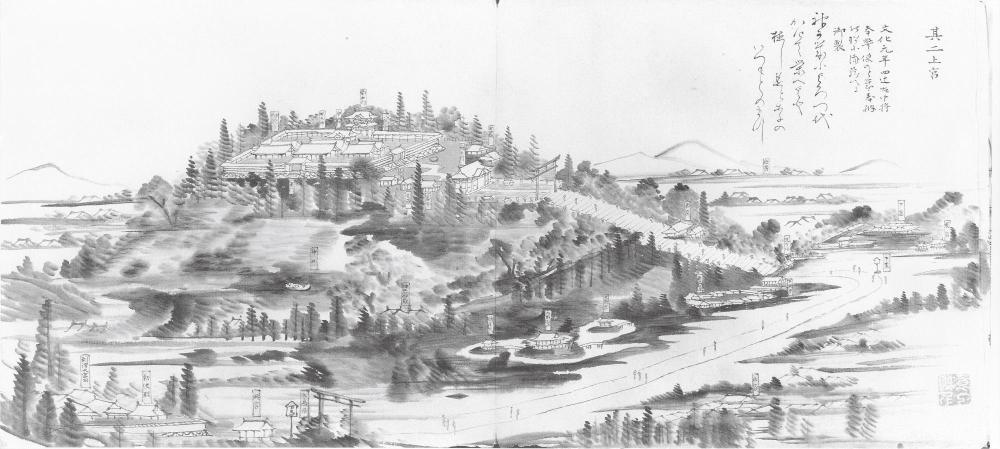
The Jogu depicted in The Illustrated Diary of Minomushi Sanjin (1864)
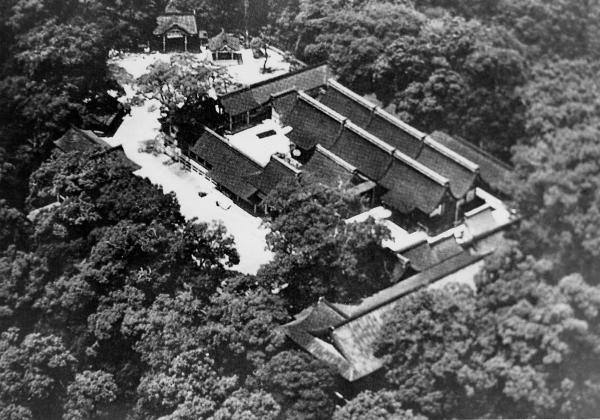
Aerial view of the Jogu
(early twentieth century)
The Jogu (Upper Shrine) is where most rituals and prayers take place at Usa Jingu. It enshrines three main deities: Hachiman, the deified Emperor Ojin (the 15th emperor of Japan); his mother Empress Jingu; and a trio of goddesses called Hime Okami. Hachiman is worshipped as a guardian of the country and the imperial family, Empress Jingu is associated with safe childbirth, and the Hime Okami are believed to answer prayers for safety at sea.
The usual method of praying at Shinto shrines consists of bowing twice, clapping twice, praying silently with hands held together, and then giving a final bow. However, at Usa Jingu the style is slightly different: the tradition is to clap four times instead of two. In addition, at the Jogu and the Gegu (Lower Shrine) worshippers are encouraged to pray in front of each of the three sanctuaries enshrining the deities, not just at the center.
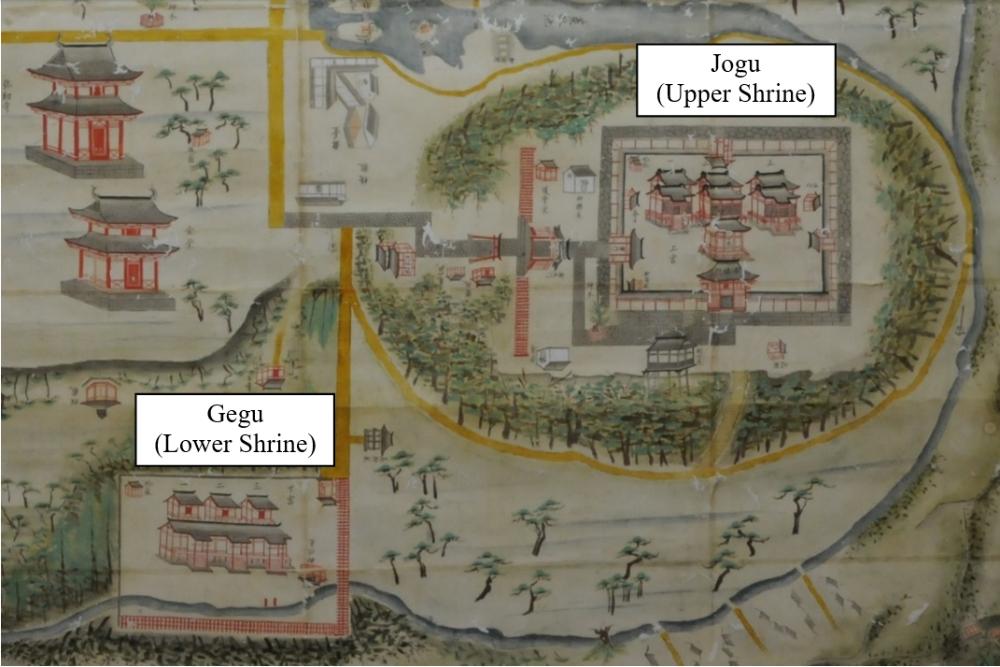
Illustrated map of Usa Jingu shrine grounds (mid-eighteenth century)
The three main sanctuaries of the Jogu are built in the hachiman-zukuri architecture style that originated at Usa Jingu. Though each sanctuary looks like two separate buildings with a passageway between them, each one is a single structure with two gabled roofs. The interior is divided into an inner hall containing a curtained sleeping platform and an outer hall with a throne. The deities are believed to occupy the outer halls during the day to listen to prayers and then retire to the inner halls at night. The interiors of all three sanctuaries are richly decorated with paintings of phoenixes. It is said that there are around 40,000 Hachiman shrines in Japan, but less than 10 of them still have traditional wooden hachiman-zukuri sanctuaries.
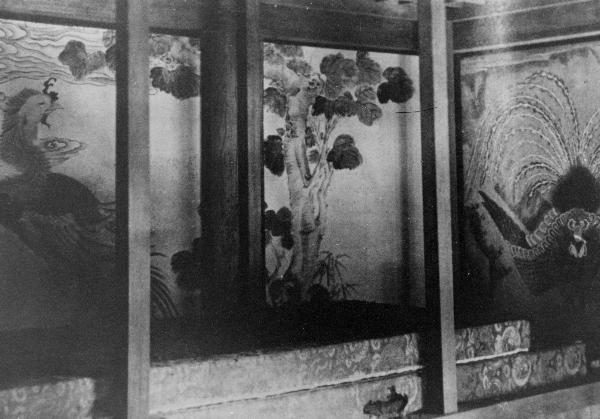
Phoenix paintings
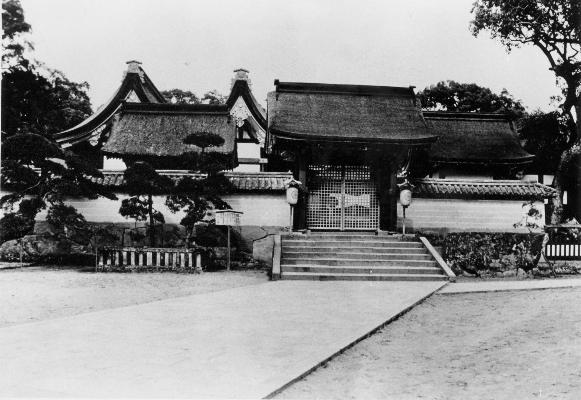
Main sanctuary area (1917)
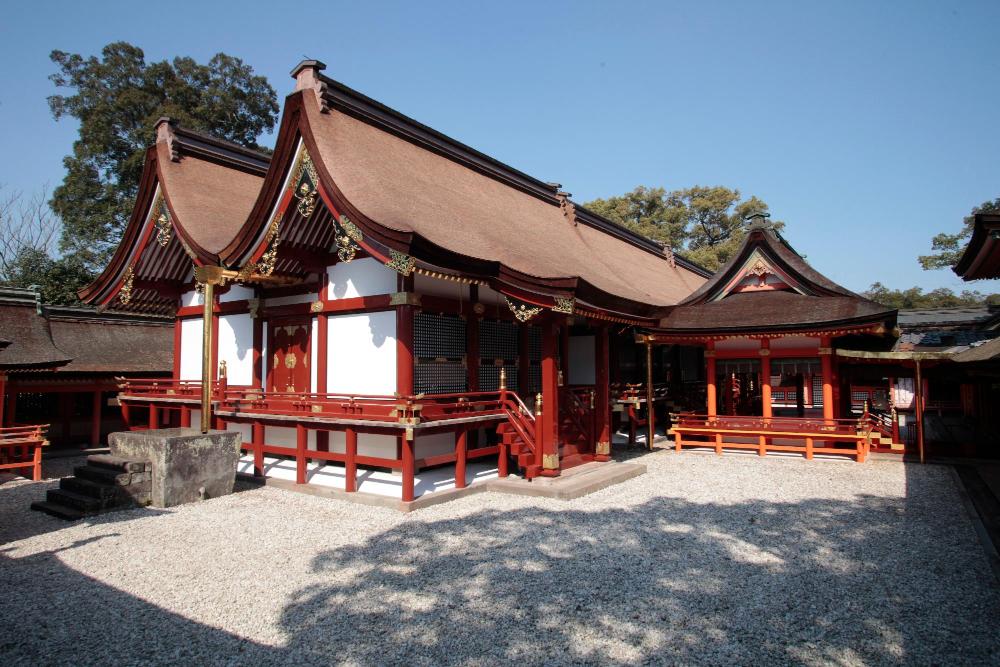
Three main sanctuaries of the Jogu
Three smaller shrines that stand on the Jogu grounds serve as guardians for each of the three main sanctuaries. Kasuga Jinja Shrine protects the Hachiman sanctuary and enshrines a deity believed to provide assistance to Amaterasu Okami, the goddess of the sun, alongside Hachiman. Hokushin Jinja Shrine protects the Hime Okami sanctuary and enshrines the deities of the land on which Usa Jingu is built. Notably, Hokushin Shrine is another example of a hachiman-zukuri structure at Usa Jingu. Sumiyoshi Jinja Shrine protects the Empress Jingu sanctuary and enshrines three deities that granted blessings to the empress. In addition to these shrines, a large camphor tree planted along the Jogu wall serves as a place of worship for Hachiman’s divine children.
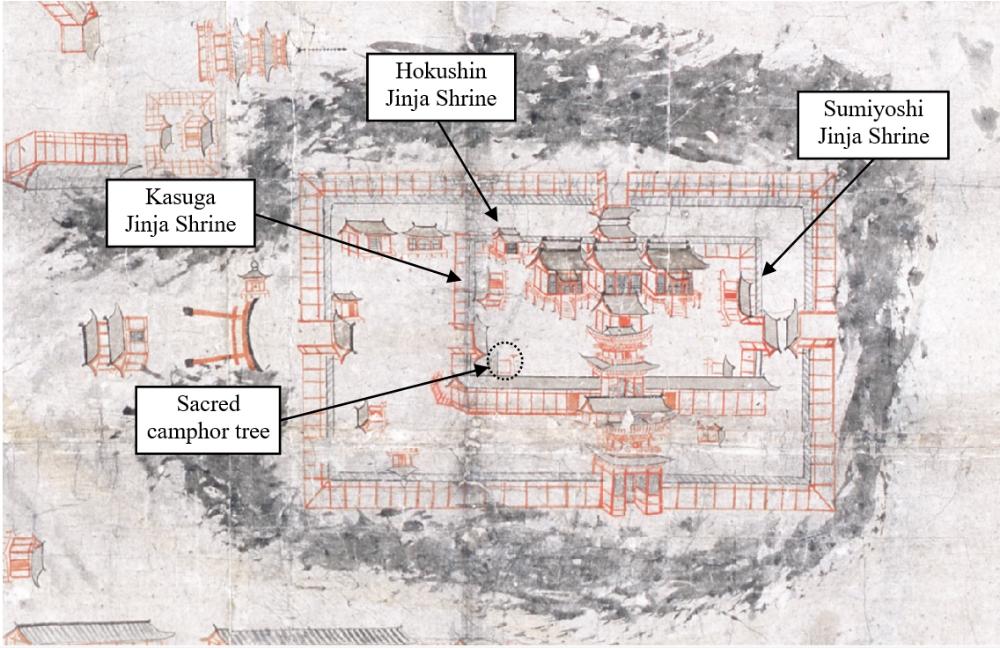
Jogu on an illustrated map (early fifteenth century)
The first sanctuary enshrining Hachiman was built at the Jogu in 725, and the halls seen today are reconstructions that were completed between 1859 and 1861. After comprehensive repairs undertaken from 2012 to 2015, the vermilion pillars, white walls, and cypress bark roof thatching of the Jogu are a particularly beautiful sight against the sky and surrounding trees. The three main sanctuaries of the Jogu are designated National Treasures, and the Hokushin Shrine, the Minami Churomon Gate, and the Saidaimon Gate are designated Tangible Cultural Properties by Oita Prefecture.
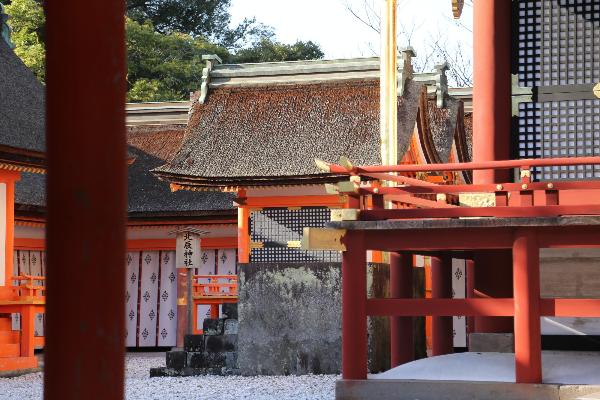
Hokushin Jinja Shrine
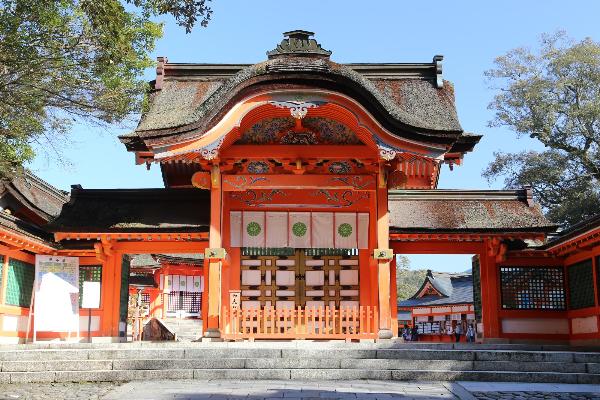
Saidaimon Gate
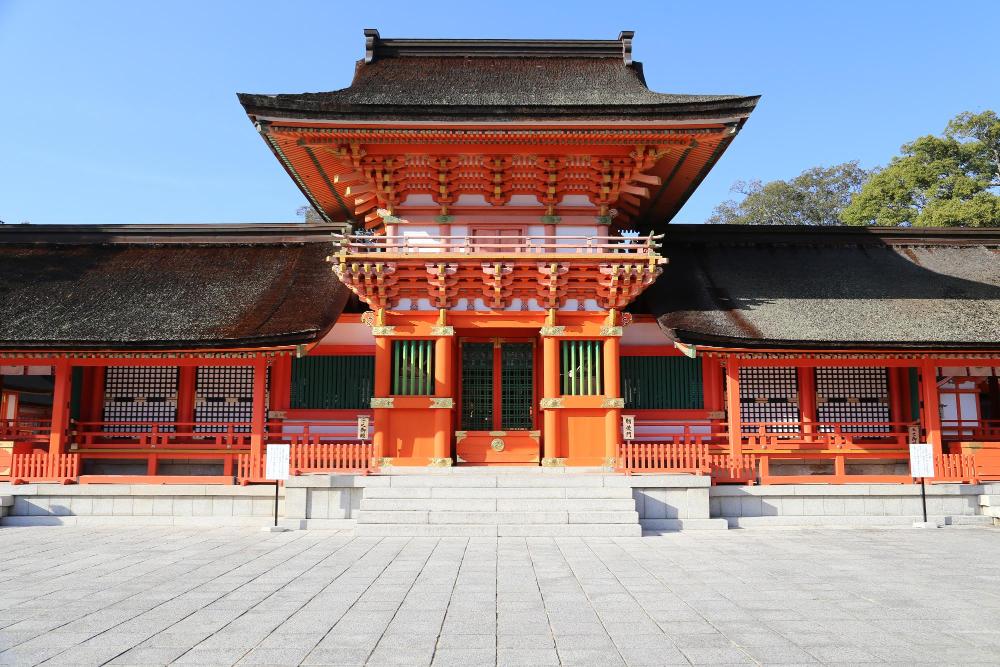
Minami Churomon Gate

This English-language text was created by Japan Tourism Agency.
- ページに関する評価
-







更新日:2024年03月18日